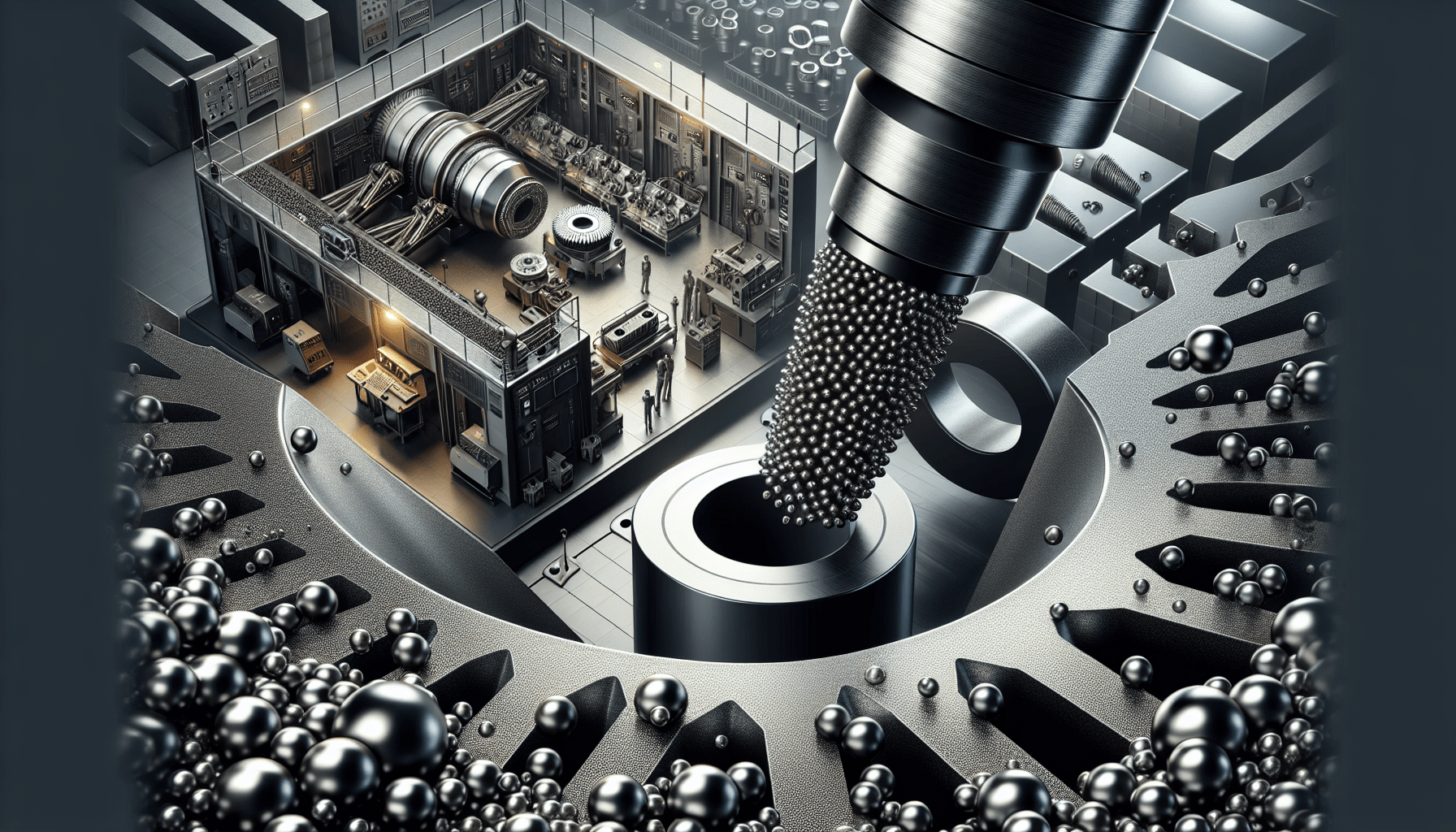FLASHFORGE 3D Printer AD5M, CoreXY 600mm/s High-Speed Printer with 1-Click Auto Leveling, High-Temp Direct Drive Extruder, 3s Quick-Swap Nozzle, 220×220×220mm Build Volume
$259.00 (as of June 19, 2025 23:45 GMT +00:00 - More infoProduct prices and availability are accurate as of the date/time indicated and are subject to change. Any price and availability information displayed on [relevant Amazon Site(s), as applicable] at the time of purchase will apply to the purchase of this product.)In a recent development that holds significant promise for the world of 3D printing, students at Rice University have successfully designed an affordable metal 3D printer prototype using cold-spray technology. Traditionally, metal 3D printing has been a costly process due to the need for expensive environmental setups or robotic arms. However, the students’ innovative approach involves using kinetic energy to fuse metal particles together, offering a more cost-effective solution. By accelerating particles of the same material at extreme velocities using a parabolic nozzle, the students were able to achieve high speeds that surpassed those of existing supersonic systems. Perhaps most impressive is the low cost of their prototype, coming in at approximately US$5,000. While there are still questions about the practicality and scalability of this technology, the potential for commercialization and widespread adoption is certainly promising.
Overview of the Metal 3D Printer Prototype
In recent years, metal 3D printing has gained significant attention for its ability to fabricate complex and customized metal parts. However, one major barrier to the widespread adoption of this technology has been the high cost associated with metal 3D printing. To address this issue, a group of students from Rice University have developed an inexpensive metal 3D printer prototype utilizing cold-spray technology. This article will provide an overview of this prototype, including its advantages, design, affordability, and potential for commercialization and future development.
Cold-Spray Technology in Metal 3D Printing
Cold-spray technology is a method of metal 3D printing that utilizes kinetic energy to fuse metal particles together. Unlike traditional methods that rely on extreme heat to melt metal and then solidify it through cooling, cold-spray technology uses high velocities to bond particles of the same material. When these particles collide with each other at extreme speeds, their molecules are close enough to bond, creating a solid metal structure. This approach offers several advantages over traditional methods, including its simplicity, cost-effectiveness, and ability to fabricate complex and intricate designs.

$30 off $400+ Anycubic Products with code AC30OFF
SPEE3D’s Supersonic System
SPEE3D’s supersonic system is one of the few examples of cold-spray technology being used in 3D printing. The system works by blasting metal particles at high velocity to quickly form metal 3D printed parts. While the exact velocity of the particles is not disclosed by the company, it is sufficient to bond stainless steel particles using their Phaser nozzle. However, the use of cold-spray technology in 3D printing is still limited, making the development of the Rice University prototype all the more significant.
Design of the Rice University Prototype
The metal 3D printer prototype developed by the Rice University students features a unique design that allows for high velocities and precision in particle deposition. The system involves a reservoir of heated nitrogen gas, which significantly raises the gas pressure. This pressurized gas is then directed through a parabolic nozzle, which accelerates the gas to Mach 3 speeds. By propelling copper particles at extreme speeds, the prototype is able to achieve a particle velocity of 550m/s, or roughly 2000km/hr. This design demonstrates the potential for achieving high velocities and precision in metal 3D printing using cold-spray technology.

Affordability and Cost of the Prototype
One of the notable advantages of the Rice University metal 3D printer prototype is its low cost. The students were able to develop the prototype for approximately $5,000, which is significantly cheaper compared to other metal 3D printers on the market. This affordability opens up possibilities for the technology to be adopted by hobbyists and small-scale businesses that may have previously been unable to invest in metal 3D printing. While the prototype is still in its early stages and requires further development and refinement, its low cost presents promising potential for affordable metal 3D printing.
Commercialization and Future Development
Although the Rice University metal 3D printer prototype shows great promise, there are several considerations and challenges that need to be addressed before commercialization can be realized. Further development and refinement of the prototype are necessary to ensure its reliability, efficiency, and scalability. Additionally, questions regarding the capacity of the nitrogen gas, printing duration, printing larger items, and the possibility of recycling nitrogen need to be answered. However, despite these challenges, the student-developed prototype has the potential to be adopted and improved upon by entrepreneurs in the future.
Challenges and Limitations of the Prototype
While the Rice University metal 3D printer prototype shows great potential, it also faces certain challenges and limitations. One key concern is the capacity of the nitrogen gas reservoir and its impact on printing duration. If the pressure of the gas lowers beyond a threshold, printing would have to be stopped, which could limit the size and complexity of the printed parts. Additionally, the question of recycling nitrogen arises, as efficient and sustainable use of resources is crucial in 3D printing. These challenges highlight the need for further research and development to optimize the performance and capabilities of the prototype.
Promising Applications of the Technology
The affordability and accessibility offered by the Rice University metal 3D printer prototype opens up numerous opportunities for its application in various industries and sectors. Affordable metal 3D printing has the potential to revolutionize manufacturing processes in industries such as automotive, aerospace, healthcare, and consumer goods. Additionally, the expansion of accessible metal 3D printing technology can empower small businesses and individuals to create customized and personalized metal parts for a wide range of applications. The possibilities presented by this technology are vast and could lead to significant advancements in various fields.
Importance of Sustainable Wind Turbines
The need for sustainability in wind turbine production is a pressing concern due to the increasing demand for renewable energy sources. 3D printing plays a crucial role in revolutionizing wind turbine production by offering fast and cost-effective manufacturing processes. Metal 3D printing, in particular, enables the fabrication of complex and lightweight components that are essential for optimizing wind turbine performance. The affordable metal 3D printer prototype developed by Rice University students using cold-spray technology presents a sustainable solution for manufacturing wind turbine parts, contributing to the development of more efficient and eco-friendly renewable energy sources.
Advancements in 3D Model Cleaning
Ensuring the cleanliness and integrity of 3D model files is crucial for various applications. Hidden messages and steganography within 3D models can compromise the security of printed objects or cause functional issues. To address this concern, researchers have developed a system for detecting and sanitizing steganography in 3D models. This system plays a critical role in ensuring that 3D models used for manufacturing processes are free from hidden threats and can be trusted for their intended applications. Clean 3D model files are essential for industries such as healthcare, aerospace, and defense, where safety and reliability are of utmost importance.
In conclusion, the Rice University metal 3D printer prototype developed using cold-spray technology offers an affordable and promising solution to the high cost of metal 3D printing. Its unique design, high velocities, and low cost open up opportunities for its application and commercialization in various industries. However, further research and development are necessary to overcome challenges and optimize performance. This prototype exemplifies the potential of affordable metal 3D printing in revolutionizing manufacturing processes and expanding accessibility to this transformative technology.
Buy Photon Mono M5 Get Free 1KG Resin







